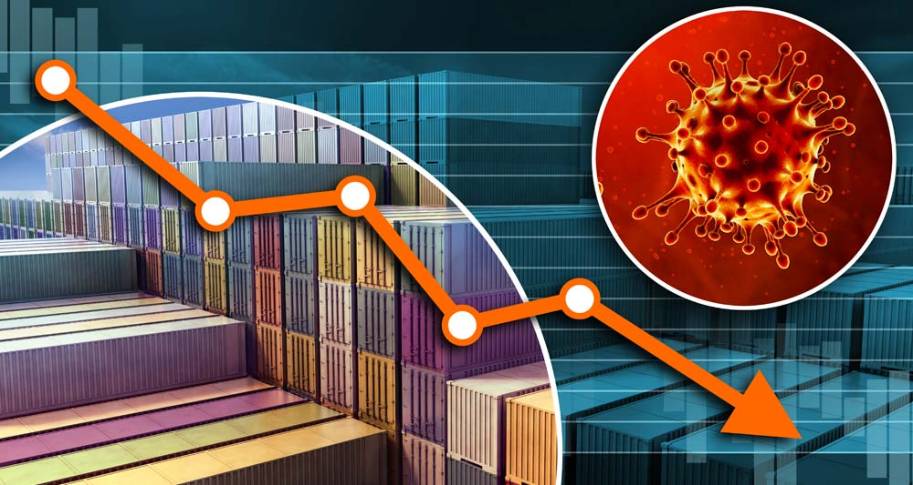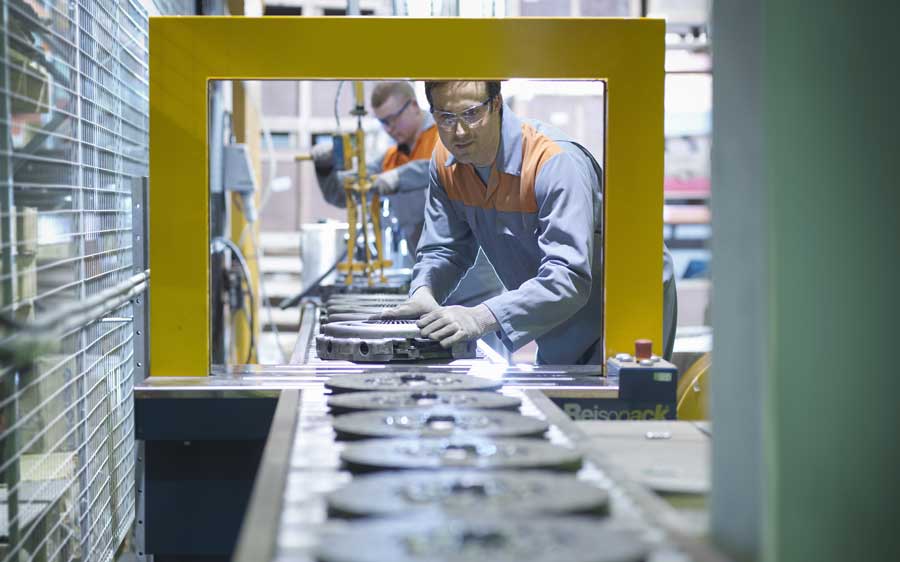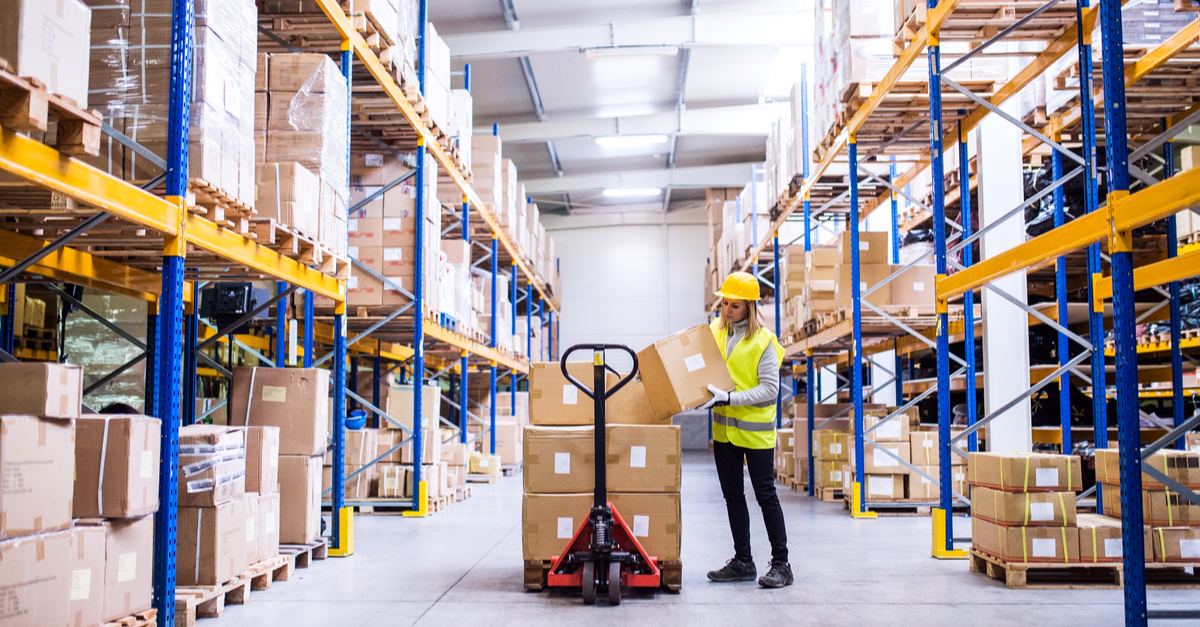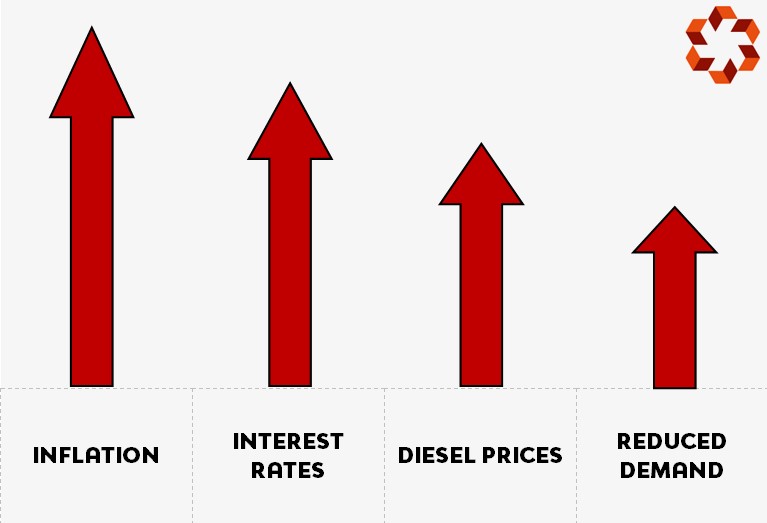Supply Chain Disruptions
In our last blog post, we explored the journey a hypothetical $20 T-Shirt purchased online takes to get from the factory to your front door. We touched on how multiple disruptions to the supply chain during Covid exposed the unpreparedness of the whole supply chain to numerous simultaneous failures. Here, we try to parse why a previously resilient system collapsed and what to look out for in the future. Some of the solutions and innovations are not yet available to everyone. We all wanted a VCR, microwave, or smartphone when they first came to market. But their commercial viability hadn’t been tested, and they weren’t affordable to everyone. With time, the technology became available and affordable. Pretty soon, everyone owned these devices. Covid necessitated and sped up technological solutions for problems we did not anticipate. Its development is still being fine-tuned and scaled. Widespread use still might be in the future, but the future is starting now.

Any analysis of what happened to the supply chain during Covid must take into consideration three changes to the overall marketplace that took place in the preceding decade; the pace of technological innovation, the exponential growth of eCommerce, and the use of “gig workers.” Technological innovation took eCommerce from the desktop to the smartphone. As a result, eCommerce became ubiquitous and, therefore, more popular and accessible. The growth of online shopping necessitated greater efficiency in an overtaxed supply chain, which ushered in the wider use of gig workers.
When Covid precipitated the systemic breakdown of the global supply chain, it was magnified by the sheer volume of transactions the system was now handling and the increased number of people operating it. Of course, another factor in the meltdown was the increased demand for products, particularly products purchased online and delivered to the home, that the pandemic engendered.

A postmortem of the Covid supply chain crisis didn’t reveal anything new, but it did expose how little attention was paid to the complexity of the system before. For example, the interconnectivity of various firms, the number of intermediary firms within the supply chain, and how dense it is. As we mentioned in our previous post, the vastness of the system cushioned the process from one or even a few interruptions. Despite severe challenges and the resulting shortages, the global supply chain exhibited resilience for such a widespread crisis.
At the beginning of the pandemic, there were shortages of everything from toilet paper to yeast. Initially, the shortages stemmed from simple supply and demand. Manufacturers, distributors, and retailers were not prepared for the wholesale shutdown of their facilities and transportation modes. Despite the lockdowns and dealing with the unknown (the pandemic), manufacturers and suppliers recovered quite well. Still, it exposed flaws in the overall supply chain that we are still recovering from today.
Manufacturing
Prior to the pandemic, the manufacturer of our hypothetical T-Shirt slept well knowing that her product was being manufactured at a factory of her choosing, most likely somewhere in Asia at a cost where she could make a decent margin selling it. She also took comfort in knowing that she had options to make her product elsewhere if the need arose and that she held enough inventory in her warehouses for a few sales cycles.
The factory knew it could easily and cheaply procure the textiles, thread, and fabrics needed to produce the shirt and spare parts for its machines. It also was able to rely on a predictable workforce, a consistent order pipeline, and the necessary energy to keep the machines operating. All in all, any interruptions to any of those steps could be easily remedied. The manufacturer can move production to another factory or even to a different country. The factory can purchase spare parts or textiles from a different supplier.

What the pandemic exposed was the possibility of whole countries closing down. Access to a different factory or another country was not guaranteed. Raw goods and materials were not easily replaced.
Road Freight
Road freight, or trucking, appears multiple times in the production to sales cycle. A truck will pick the product up at the factory and deliver it to a river barge or directly to a port.

Once it arrives at its destination country, it will likely be trucked from the port to a distribution center and from there to a carrier, where it will be trucked again to the customer’s home.
Trucking is one of the more predictable links in the supply chain. There are over 800,000 trucks on the road in the US, from single-vehicle operators to large fleets. But trucking has been evolving since 1980, when the industry was deregulated and more rapidly with the growth of Amazon and eCommerce. What was once a simple, easily explainable process has become a complex ecosystem. The major carriers have drivers whom they employ and operate company-owned vehicles. They also contract out some of their routes to third parties who operate their own vehicles. The pandemic exposed shortcomings in the system when confronted with multiple disruptions.
Warehousing
The pandemic saw a major uptick in on-demand warehousing, already rising steadily due to the popularity of eCommerce over the previous decade. Sellers were looking for even more flexibility and agility in their operations. Like trucking, previous notions about the warehousing industry quickly became outdated. Warehouses, once parking spots for products before being shipped out to brick-and-mortar retailers, now also act as fulfillment centers for direct-to-consumer transactions.

Warehouses have people working side-by-side in close proximity, which is not the ideal environment for a pandemic. Companies like Amazon grew by offering quick and inexpensive or free shipping. This caused work in warehouses to become more difficult and less desirable. Those factors made warehouses one of the most vulnerable links in the supply chain during the pandemic. Innovation and automation are slowly improving that situation, but access and widespread use of the technology has not yet been achieved. Robotics may one day succeed in replacing all or most humans in the warehouse, but right now, automation increases the efficiency of workers; it doesn’t replace them.
River Barges
River barges are likely the least thought-about link in the supply chain. However, over the past 6-months, the Rhine River in Germany and France and the Mississippi River in the US both suffered from drought-induced low water levels. Those record-low levels either slowed down or halted river barge shipping for a period. In the US, the Mississippi River is an artery that moves products inland on a north-south axis and is the main mode of transport for corn, wheat, and soy, grown in the Midwest to get to the ports for export. It also carries imported goods that arrive in the US at the port of New Orleans. In the case of the drought, much of the slack was picked up by rail freight and trucks. Thankfully, the water levels only caused a slowdown and not a shutdown.
Rail Freight

Rail freight holds a nostalgic and iconic image in American culture. The rails opened up the West for settlement and were the primary source of travel and freight for decades. Rail still delivers 30% of all US freight. At one point, there were over 100 Class I (doing more than $300 million in 21st-century dollars) railroad companies operating in the US. Today, after deregulation and consolidation, there are just 7.
The railroad’s history and the outsized role it played in the US economy from the mid-1800s until well into the 20th century caused much legislation to be written governing it. The Railroad Labor Act of 1926 is still on the books today, and one of its main powers is the ability to force rail workers back to work if they go on strike. That power was invoked 18 times over the past 100 years, and last week, congress used the RLA to prevent a work stoppage. The point of the RLA is to prevent the economic calamity that would result from a rail strike. But there are other factors that make the rails a very vulnerable part of the supply chain.
Deregulation of the industry not only caused consolidation and mergers of rail companies, it also ushered in an era of shareholder vs. stakeholder capitalism. Railroads focused on shareholder value and returns, and one way they did that was by implementing Precision Schedule Railroading (PSR). PSR involved cutting the amount of staff operating trains. Needless to say, with fewer people, any interruption, like a pandemic, will have a larger effect on the sector.
Geopolitics
Just as the supply chain was beginning to recover, geopolitics came and made everything more complicated. Russia invaded Ukraine and caused shipping routes to be adjusted. China continued a Zero Covid Tolerance policy that had the country locking down large cities at a time well after the rest of the world ceased doing so. Companies like Apple started moving production away from China and to other countries to mitigate risk. Others started “nearshoring” (moving manufacturing closer to home). Brexit is reducing market access to the UK. The EU is importing less from Russia, primarily oil and gas. All of these add stress to an already strained supply chain.
Inflation, higher interest rates, high diesel prices, and reduced demand has given the marketplace an opportunity to recalibrate and prepare for what comes next. What is apparent, though, is that resilience brought on by experience and innovation keeps us going and the supply chain strong.
There is an old adage about never wasting a good crisis. The pandemic was such an opportunity. Many have called Covid a once in a 100-year pandemic. But the world is showing that events don’t wait until they are convenient to happen. The pandemic, droughts, geopolitics, and lingering supply chain issues have necessitated our adjusting to multiple interruptions. Only time will tell if we have prepared enough.



